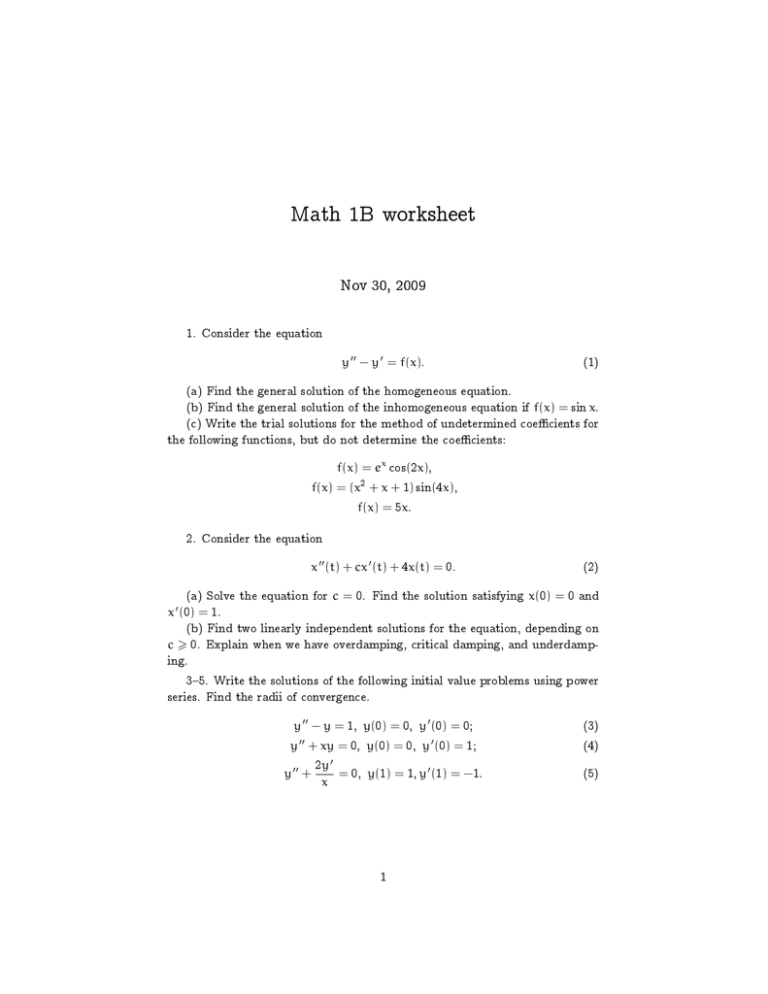Math 1B worksheet Nov 30, 2009
advertisement

Math 1B worksheet
Nov 30, 2009
1. Consider the equation
.
(1)
(a) Find the general solution of the homogeneous equation.
(b) Find the general solution of the inhomogeneous equation if f(x) = sin x.
(c) Write the trial solutions for the method of undetermined coecients for
the following functions, but do not determine the coecients:
f(x) = ex cos(2x),
f(x) = (x2 + x + 1) sin(4x),
f(x) = 5x.
2. Consider the equation
x 00 (t) + cx 0 (t) + 4x(t) = 0.
(2)
(a) Solve the equation for c = 0. Find the solution satisfying x(0) = 0 and
x 0 (0) = 1.
(b) Find two linearly independent solutions for the equation, depending on
c > 0. Explain when we have overdamping, critical damping, and underdamping.
3{5. Write the solutions of the following initial value problems using power
series. Find the radii of convergence.
y 00 − y = 1, y(0) = 0, y 0 (0) = 0;
(3)
00
0
y + xy = 0, y(0) = 0, y (0) = 1;
(4)
0
2y = 0, y(1) = 1, y 0(1) = −1.
y 00 +
(5)
x
y 00 − y 0 = f(x)
1
Hints and answers
1. (a) y = c1 + c2ex .
(b) y = 12 (cosx − sin x) + c1 + c2ex .
(c) y = Aex cos(2x) + Bex sin(2x); y = (Ax2 + Bx + C) sin(4x) + (Dx2 + Ex +
F) cos(4x); y = (Ax + B)x.
2. (a) The general solution is x = c1 cos(2t) + c2 sin(2t); the solution to the
initial value problem is x = 12 sin(2t).
−c/2
(b) For 0 6 c < 4, we have
cos(βt), x2(t) =
√ underdamping: x1 (t) = e
1
−c/2
2
e
sin(βt), where β = 2 16 − c .
For c = 4, we have critical damping: x1(t) = e−2t, x2(t) = te−2t.
For c > 4, we have overdamping: x1(t) = er1t, x2(t) = er2t, where r1 and
r2 are the two real roots to the equation r2 + cr + 4 = 0; both r1 and r2 are
negative.
2




